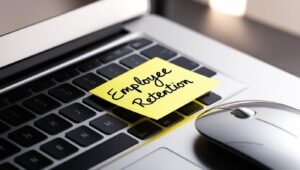When was the last time you heard a company brag about its older workforce? I dont remeber seeing any such post on LinkedIn ever.. Odds are, it’s not something that comes up in boardroom discussions or quarterly reports. The spotlight tends to shine on fresh graduates, digital natives, and rising stars. Meanwhile, employees aged 50 and above, the ones with decades of experience under their belts, who might have given thier youth to the company, often fade into the background.
Your older employees are your secret weapon, a hidden asset in your organization.
As much as some of the folks might like to think, but the older workers are, NOT, “over the hill.” They’re the quiet backbone of many organizations, yet they’re often ignored in workforce strategy discussions. In the U.S., over 36% of the labor force is 55 or older, according to the Bureau of Labor Statistics. By 2030, that number will grow. Yet, companies still prioritize hiring younger talent, assuming they’re more tech savvy or trainable. But what we should know is that these folks hold the key to solving your retention, productivity, and knowledge transfer dilemmas?
It is a missed opportunity for your organisation if you aint tapping on this.
Older employees bring something unique to the table, wisdom. Not just knowledge, but the kind of wisdom that comes from years of navigating challenges, making decisions, and learning from both successes and failures. This isn’t about seniority for its own sake; it’s about the tangible benefits that experience brings.
Think about problem solving. A 2022 MIT Sloan Management Review study found that older employees often outperform their younger counterparts in complex problem-solving scenarios. Why? They’ve likely encountered similar issues before and know how to navigate them efficiently. This isn’t just anecdotal, it’s backed by data.
What does this mean for your bottom line?
Reduced Training Costs: Experienced employees require less training. They’ve already mastered many of the skills needed for their roles. This doesn’t mean they can’t learn new things, it just means you don’t have to start from scratch. A Microsoft study showed that teams with older employees had 22% lower error rates in customer service roles. That’s a direct impact on your operational efficiency.
Higher Retention Rates: In an era where we are starting to get frustrated with employees hopping jobs by the time they start producing result for the company, older employees are are like a blessing. According to a 2023 Gallup poll, they’re 40% less likely to quit than millennials. This stability reduces the costs associated with turnover, a costs that can be as high as 213% of an employee’s annual salary for highly trained positions. You should also highlight their contributions by celebrating the achievements of older employees. Feature their stories in company communications or social media pages. This would help on amazing employer branding.
Enhanced Mentorship Opportunities: Older employees are natural mentors and they can solve problems quickly. A 55 year old engineer might troubleshoot a manufacturing issue in hours, while a 25 year old could take days. They’ve been there, done that, and can guide younger talent through the ropes. This knowledge transfer is invaluable. A Procter & Gamble program that paired older retirees with new hires saw a 35% improvement in product development cycles.
Improved Team Dynamics: Diverse teams perform better. Imagine a team where a 25 year old’s creativity meets a 60 year old’s crisis management. That’s the magic of age diversity. Age diversity brings different perspectives, enriching discussions and fostering innovation. A Boston Consulting Group study found that companies with diverse workforces, including age diversity, innovate at higher rates and generate 19% more revenue from innovation.
Your older workforce isn’t a liability, it’s a lifeline. They’ve weathered recessions, navigated crises, and mastered resilience.
Now, I am sure you were thinking about these while reading the above –
- “Older employees don’t adapt to new technology.”
- “They’re too rigid to lead change.”
- “They’ll retire soon, why invest?”
These are myths and perceptions. But if you are serious about it, this is what you can to deal with it –
Outdated Perceptions: Train managers to recognize age bias. Encourage cross-generational projects to break stereotypes.
Lack of Flexibility: Offer phased retirement programs or part-time roles. At IBM, employees aged 55+ can work 20 hours a week while mentoring newcomers.
Tech Anxiety: Pair older workers with “tech buddies” for 1:1 support. At a Texas healthcare provider, this reduced training time by 40%.
Health Concerns: Invest in ergonomic workspaces and wellness programs. A Florida utility company saw a 28% drop in workplace injuries after redesigning office setups.
If you are an HR leader, this is what you can consider doing:
- Conduct Age Diversity Audits: Assess the age distribution within teams and leadership to identify potential gaps.
- Revise Job Descriptions: Ensure that language doesn’t unintentionally deter older applicants.
- Promote Intergenerational Collaboration: Encourage projects that pair employees of different age groups to foster mutual learning.
- Offer Continuous Learning: Provide training programs that cater to all employees, regardless of age, to promote lifelong learning.
- Recognize and Celebrate Contributions: Highlight the achievements of older employees to reinforce their value within the organization. Feature their stories in company communications or social media pages. They have earned it!
The Road Ahead:
The future of work is age diverse. The Bureau of Labor Statistics projects that by 2030, over 36% of the U.S. labor force will be 55 or older. This isn’t a trend it’s a demographic reality. Companies that embrace this reality will gain a competitive edge. They’ll benefit from the wisdom, stability, and mentorship that older employees provide. They’ll also create more inclusive cultures that value all stages of a career. So, the next time you’re planning your workforce strategy, remember this overlooked asset. Your older employees aren’t just valuable, they’re irreplaceable.
The future of work isn’t young, it’s mixed. Older employees are here to stay.
#AgeDiversity #InclusiveWorkplace #WorkforceStrategy #KnowledgeTransfer #EmployeeRetention #HRInsights #LeadershipDevelopment #FutureOfWork #MentorshipMatters #ExperienceCounts



